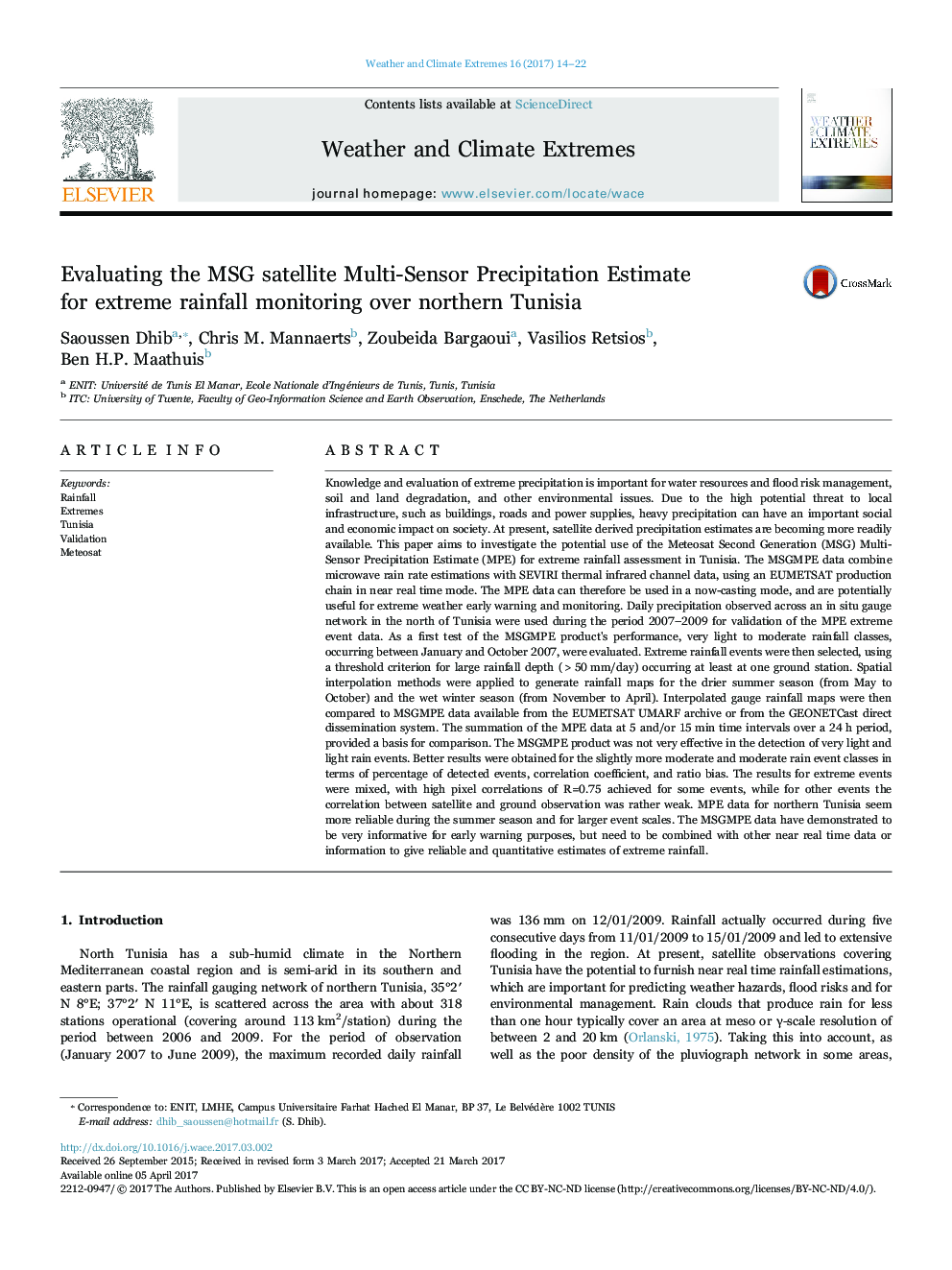| Article ID | Journal | Published Year | Pages | File Type |
|---|---|---|---|---|
| 5119513 | Weather and Climate Extremes | 2017 | 9 Pages |
Knowledge and evaluation of extreme precipitation is important for water resources and flood risk management, soil and land degradation, and other environmental issues. Due to the high potential threat to local infrastructure, such as buildings, roads and power supplies, heavy precipitation can have an important social and economic impact on society. At present, satellite derived precipitation estimates are becoming more readily available. This paper aims to investigate the potential use of the Meteosat Second Generation (MSG) Multi-Sensor Precipitation Estimate (MPE) for extreme rainfall assessment in Tunisia. The MSGMPE data combine microwave rain rate estimations with SEVIRI thermal infrared channel data, using an EUMETSAT production chain in near real time mode. The MPE data can therefore be used in a now-casting mode, and are potentially useful for extreme weather early warning and monitoring. Daily precipitation observed across an in situ gauge network in the north of Tunisia were used during the period 2007–2009 for validation of the MPE extreme event data. As a first test of the MSGMPE product's performance, very light to moderate rainfall classes, occurring between January and October 2007, were evaluated. Extreme rainfall events were then selected, using a threshold criterion for large rainfall depth (>50 mm/day) occurring at least at one ground station. Spatial interpolation methods were applied to generate rainfall maps for the drier summer season (from May to October) and the wet winter season (from November to April). Interpolated gauge rainfall maps were then compared to MSGMPE data available from the EUMETSAT UMARF archive or from the GEONETCast direct dissemination system. The summation of the MPE data at 5 and/or 15 min time intervals over a 24 h period, provided a basis for comparison. The MSGMPE product was not very effective in the detection of very light and light rain events. Better results were obtained for the slightly more moderate and moderate rain event classes in terms of percentage of detected events, correlation coefficient, and ratio bias. The results for extreme events were mixed, with high pixel correlations of R=0.75 achieved for some events, while for other events the correlation between satellite and ground observation was rather weak. MPE data for northern Tunisia seem more reliable during the summer season and for larger event scales. The MSGMPE data have demonstrated to be very informative for early warning purposes, but need to be combined with other near real time data or information to give reliable and quantitative estimates of extreme rainfall.
